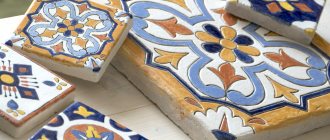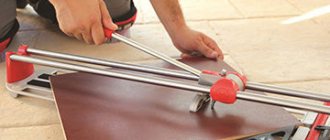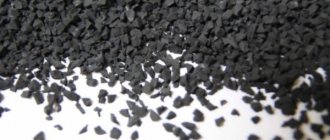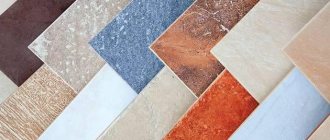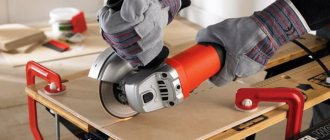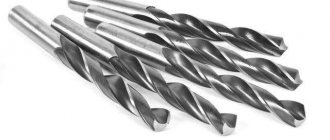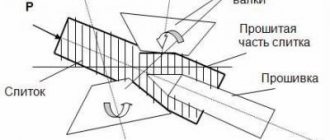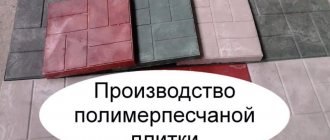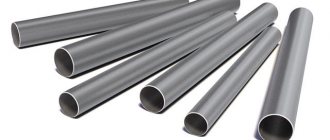For cladding the outside of buildings, various cladding materials are used, for example, facade (clinker) tiles. The production of clinker tiles has low cost and production time. It is possible to choose a variety of materials as a base. Mineral mixtures are most often used. Cement, quartz sand and clay are mixed. The simple manufacturing process makes it possible to create tiles in-house, but this requires special equipment.
In the modern world you can buy different types of clinker, with large differences in color, with the most daring design solutions. And also to simplify the coating, you can purchase special molds for tiles. Despite the availability of clinker, the total cost of covering the area of the house can amount to a significant amount. The molds are designed to simplify the process of making slabs with your own hands, which will significantly reduce the cost of the process. But more on that later.
Features of clinker
Facade tiles have significant differences from similar facing materials.
If we compare it with tiles, then it is the undisputed leader. It is used exclusively for finishing buildings, so it has a wide range of qualities:
- It is resistant to various types of damage, including scratches and strong impacts.
- Due to its use in outdoor conditions, the tiles are wear-resistant and not susceptible to mold and other harmful influences.
- The production of facade tiles is done in such a way that the number of pores through which there is a possibility of moisture penetration is minimized.
- A prerequisite for any type of tile is resistance to frost.
- The tiles are not affected in any way by exposure to ultraviolet radiation. The original color is preserved in any conditions.
Of all the above, the most important condition is to ensure the durability of the coating. The facing tiles must have a long period of time during which they will not change their properties and appearance.
Features of clinker panels
The basis of the composition of clinker panels is ceramics, which is a moisture-resistant and durable substance . In addition, the slabs can be two- or three-layer.
The outer layer is ceramic tiles, the inner layer is insulation. The insulation can be polystyrene foam or polyurethane foam.
It is because of the presence of insulation that clinker panels are sometimes called thermal panels. The structure of each plate provides holes and mounting grooves for installation.
Industrial production
For wide production, the two most popular technologies are used: semi-dry pressing and extrusion production.
Extrusion Manufacturing Process
For making tiles at home, these methods are also suitable, but you need to make a number of changes to the technology.
The main differences between the methods lie in the molding principle. The first method involves pressing the material, after which the product, which has taken shape, is placed in an oven and fired, excluding drying from the process.
The product is obtained with low density, low weight, but, as a result, insufficient strength. The advantage of this technology is that the finished cladding material practically does not conduct heat, which in some areas is valued much more than resistance to damage.
The second method is carried out using an extruder.
Extruder
In simple terms, this is a large meat grinder through which clay is put. The material is crushed and formed in a vacuum press. The workpiece is dried and after that it is sent to the kiln for firing.
This method of producing facade tiles is used much more often, because the resulting product is highly durable, immune to abrasion, and it is extremely difficult to damage it in any way.
Equipment for the production of clinker tiles: production line
To produce high-quality clinker, you will need:
- extruder (if extrusion is part of the technological process);
- chambers for pre-drying (depending on production needs, they may have different loading volumes and power);
- molds and rotary, lever, belt or vacuum (most often used) pressing machines;
- The key component of the chain is kilns for firing slate clay (usually tunnel kilns are used).
Home production
Before you start making facade tiles, you need to make sure that you have a basis for making:
- concrete;
- putty;
- alabaster;
- gypsum and clay.
The production of facade tiles involves the use of vibration casting technology.
Frame drawing for vibrating table
In addition, the properties of the tile depend on the quality and firing temperature. All this will require equipment that cannot be skimped on. You need to understand that making it yourself is much more difficult, and therefore the process requires more attention.
The next step will be the choice of filler; you can use whatever your heart desires, for example, sand, shells, glitter or glass chips.
It is important to understand that the tiles will not encounter any kind of load, so the most important point will be to get rid of the air inside the structure. After all, it is this that will cause the destruction of the tiles in the cold months.
Making tiles yourself is quite easy, but you need to understand that you will need some equipment for this:
- vibrating table;
- concrete mixer;
- mixer, preferably using a hammer drill;
- plastic molds;
- water capacity of 100 liters or more;
- heating cabinet
You can do without a concrete mixer if the owner has a lot of free time. To prepare a large volume of solution, you can use 10-liter portions and mix them using a hammer drill with a mixer.
The production of clinker tiles will take place using a vibrating table. There is also the option to carry out vibrations yourself or make a device similar in design.
Facade tiles
Making facade tiles with your own hands
Work on independently finishing the facades of a house under construction falls into the category of labor-intensive and responsible operations, the successful implementation of which is possible only if you have certain skills. At the same time, the use of purchased decorative tiles as a facing material seems quite expensive for some owners of their own homes.
In this article we will try to tell you how to make facade tiles with your own hands , and also share some secrets of organizing work of this class.
The finishing of building facades is carried out, as is known, at the final stage of construction work and ultimately determines the aesthetic appeal of the future home. That is why special attention is traditionally paid to the issue of choosing a suitable finishing material.
Facade tiles
In subsequent sections of our article, we will consider the known types of finishing tile materials used to make facade tiles; in them we will also try to decide which one is the most suitable for making such tiles yourself .
Factors influencing material selection
Facade tiles are a facing material used not only for the purpose of decorating facades. It provides reliable protection from various types of climatic influences.
To minimize the cost of manufacturing facing material, it is necessary to take into account a number of related factors that influence the amount of costs. These include:
- cost of raw materials;
- technology used in the manufacture of tiles;
- dimensions and shape of workpieces;
- color shades and presence of decor.
It should be noted that any dry mixtures can be used for the production of decorative tiles, ranging from traditional concrete compositions to special types (terracotta or clinker, for example).
Using special forms
Mold for making
To prepare working forms used in the production of facade tiles, you will need originals (preferably made of wild stone) that would completely replicate the structure of the future facing coating. The prints (casts) obtained from these originals will be the forms that can be used to make tiles. Let's consider this process using the example of the production of facing material “under artificial stone”, carried out by the so-called vibratory casting method.
Before starting work, the initial dry mixture (in accordance with the recommendations for its use) is diluted in warm water and then poured into previously prepared forms. Before pouring, the composition is thoroughly mixed, and immediately after it is placed in the molds it is subjected to so-called vibration treatment. To do this, you will need a special flat vibrator (vibrating table), on which all the forms prepared in one batch will be placed.
Vibrating table
During this processing, small particles of the mixture sink to the bottom, forming a dense and fairly durable front surface of the future tile product. Immediately after the initial composition has “set” and hardened, the tile should be removed from the mold and allowed to rest for some time. As a result, you get a facing material with an absolutely smooth back surface and a front side that exactly repeats the structure (pattern and texture) of the original used in its manufacture.
Forms for artificial stone
To make facade tiles of any size, you can prepare several different shapes. In this case, an interesting pattern is revealed: the more forms that differ in size are available, the more natural the structure of the façade cladding of the building will look.
Dyeing and molding techniques
To obtain one or another color for the front surface of the tile, you can use one of the well-known methods, the first of which involves mixing special enzymes into the prepared composition. According to the second method, coloring the front part of the workpiece is carried out by simply applying a special dye to its surface.
Manufacturing process
One of the variations of the first coloring method is the option of pouring an enzyme diluted in water onto the bottom of the mold immediately before making the tiles. This technique allows you to paint products to a sufficient depth and can be used as an addition to the second method.
Note! When molding facade tiles, it is necessary to carefully monitor the accuracy of the geometric dimensions and the resulting surface structure of the product. It should be noted that there is no standard classification for these characteristics of tile products, so each manufacturer chooses them at his own discretion.
Types of cladding: pros and cons
The most common types of tiles used for cladding facades include the following varieties:
- ceramic,
- concrete,
- terracotta,
- clinker
In order for you to choose the most suitable option for yourself, you should familiarize yourself with the advantages and disadvantages of each type of tile.
Ceramic granite tiles
From ceramic granite
Facade tiles made of ceramic granite are made by mixing different types of clay with the addition of sand, feldspar, dyes, and special mineral enzymes. The mixture thus obtained is first shaped and then placed in a kiln, where at a temperature of about 1300 ° C the tile takes its final form. The main advantages of this type include high frost resistance, water resistance and wear resistance of the resulting coating. The disadvantages of granite material include the difficulty of laying tiles due to their significant weight.
Concrete tiles
Concrete
Concrete tiles are made from classic Portland cement and well-sifted sand with the addition of fillers and additives, which give the product special strength and frost resistance. Vibration-pressed molds are first fired in a kiln and, after cooling, covered with colored sealants. The advantage of this type of coating is a wide selection of different textures and colors, as well as relative lightness and low cost. There are practically no significant shortcomings in tiles of this class.
Terracotta tiles
Terracotta
The starting material for the production of terracotta tiles is a special kaolin clay with a porous structure, fired in a kiln at a temperature of 1000° C. The advantages of these coatings are their ease of installation, resistance to temperature changes and solar radiation. A relative disadvantage of terracotta products is their insufficient mechanical strength.
Clinker tiles
Clinker
To produce clinker tiles, special slate clays are used, fired in a kiln at a temperature of 1300° C.
Its advantages include low moisture absorption, high frost resistance, as well as a wide selection of colors and textures, as well as resistance to mold and mildew. Its only drawback is its high price.
We invite you to see with your own eyes the process of making artificial stone for the facade:
Last edition: 04/14/2015 Vadim Andreevich
Source: https://fasadoma.ru/izgotovlenie-fasadnoy-plitki-svoimi-rukami/
Subtleties of production
In order to obtain material that meets all requirements, it is necessary to purchase only high-quality raw materials. Making tiles at home is a very risky process, especially for those who are doing it for the first time.
However, you should not be afraid of difficulties, because if you strictly follow the instructions from experienced craftsmen, the result will leave you satisfied. The technological process has the following subtleties:
- You need to add to the material the amount of water that is required and not a gram more. After all, a mixture that is too liquid will not be able to harden evenly, which will cause rapid wear of the material.
- The strength of the tile coating greatly depends on the quality of the cement used in the work. It is advisable to use only material that is graded M200 and higher.
- To improve resistance to damage, you need to use plasticizers; they can increase the properties of the material and make it stronger.
The best manufacturers of clinker tiles
Making your own tiles will be much cheaper than an analogue from a store, and the quality may be in no way inferior, but if you do not want to waste your time and money on the tedious production process, then you can take advantage of the offers of companies that have already established themselves as experienced manufacturers of facade tiles.
- Stroeher is a company that has conquered the German tile production market in a short period of time. Their clinker tile production technology is unique due to the fact that they add special components to the tile composition that improve the frost-resistant qualities of the product. A big plus of the company is that they provide a 25-year guarantee on their products.
- King Klinker is a Polish company producing facing materials. Their clinker tiles are worth a look. It has high water-repellent properties. At the stage of preparing the solution, polymers are added to it, creating a protective film on the surface of the mixture.
- Lithos. A unique technology for producing clinker tiles using a hyperpress using kaolin. The final performance of the tiles is very high. Durability and reliability are what characterize their products.
Advantages and disadvantages of panels
Clinker panels for facades, like any facing material, have their positive and negative sides.
The advantages of facing ceramic panels include:
- ease of installation (with the help of special fasteners, the panels can be simply attached to the sheathing, and the technology for fastening adjacent slabs involves snapping locks);
- environmental friendliness;
- decorative design;
- moisture resistance;
- durability (the manufacturer promises up to 50 years of unchanged appearance and high-quality components);
- absence of mold on the facing coating;
- low thermal conductivity;
- soundproofing;
- variety of shapes, textures and colors;
- ease of construction (no need to reinforce the foundation or load-bearing walls);
- UV resistance.
In addition, clinker cladding does not require special care, does not attract dirt and is easy to clean in the rain.
The rather high cost of clinker cladding causes the negative characteristics of this type of cladding, which is especially noticeable when cladding a two-story building.
You should also take into account during installation that ceramics are quite sensitive to mechanical impact forces and can be damaged if handled carelessly.

